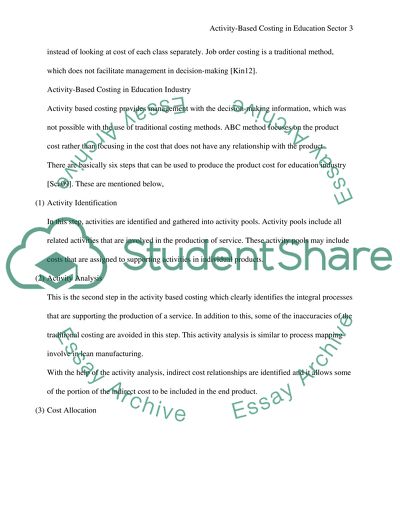Cite this document
(“Discuss how asmall UK education-sector organisation might use ABC Essay”, n.d.)
Discuss how asmall UK education-sector organisation might use ABC Essay. Retrieved from https://studentshare.org/finance-accounting/1645491-discuss-how-asmall-uk-education-sector-organisation-might-use-abc-activity-based-costing-to-a-produce-product-costs-for-services-and-to-b-evaluate-the-internal-efficiency-quality-and-profitability-per-product-or-service-line-both-benefits-and-d
Discuss how asmall UK education-sector organisation might use ABC Essay. Retrieved from https://studentshare.org/finance-accounting/1645491-discuss-how-asmall-uk-education-sector-organisation-might-use-abc-activity-based-costing-to-a-produce-product-costs-for-services-and-to-b-evaluate-the-internal-efficiency-quality-and-profitability-per-product-or-service-line-both-benefits-and-d
(Discuss How Asmall UK Education-Sector Organisation Might Use ABC Essay)
Discuss How Asmall UK Education-Sector Organisation Might Use ABC Essay. https://studentshare.org/finance-accounting/1645491-discuss-how-asmall-uk-education-sector-organisation-might-use-abc-activity-based-costing-to-a-produce-product-costs-for-services-and-to-b-evaluate-the-internal-efficiency-quality-and-profitability-per-product-or-service-line-both-benefits-and-d.
Discuss How Asmall UK Education-Sector Organisation Might Use ABC Essay. https://studentshare.org/finance-accounting/1645491-discuss-how-asmall-uk-education-sector-organisation-might-use-abc-activity-based-costing-to-a-produce-product-costs-for-services-and-to-b-evaluate-the-internal-efficiency-quality-and-profitability-per-product-or-service-line-both-benefits-and-d.
“Discuss How Asmall UK Education-Sector Organisation Might Use ABC Essay”, n.d. https://studentshare.org/finance-accounting/1645491-discuss-how-asmall-uk-education-sector-organisation-might-use-abc-activity-based-costing-to-a-produce-product-costs-for-services-and-to-b-evaluate-the-internal-efficiency-quality-and-profitability-per-product-or-service-line-both-benefits-and-d.


